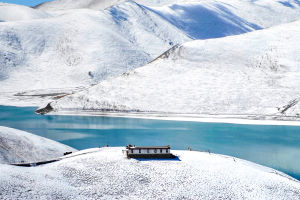Humans, like microcosmic bacteria, have learned to survive and thrive in a variety of harsh environments, from the scorching heat of the Sahara Desert to the tundra of Siberia.
For thousands of years, humans have successfully settled and developed in the oxygen-deprived mountains of the world.
In the Himalayas of Asia, the Andes of South America, and the Ethiopian highlands of Africa, around 140 million people have established their homes and built thriving cities at altitudes above 2,500 meters.
Let's take a closer look at some of these mountain cities:
1. Tulcán
Tulcán is a border city in Ecuador, situated at an elevation of 9,510 feet. It is one of the northernmost and highest cities in Ecuador. With a history dating back to the 16th century, Tulcán has become an important administrative, economic, financial, and commercial center.
2. Ipiales
Ipiales, located in Colombia, is the highest city in Colombia and belongs geographically to the Narino Plateau. It is situated near the border of Ecuador and is mainly involved in the border trade between Ecuador and Colombia, which makes it the second most important border of Colombia.
3. Quito
Quito is the capital of Ecuador, situated in the north of the country, and only 24 kilometers away from the equator. It is the closest capital city in the world to the equator. Due to its high altitude and location near the equator, Quito has a temperate marine climate, making it feel like spring all year round.
The city is surrounded by the Picincha Volcano, which rises to 4790 meters above sea level, and its summit is always covered with snow. It is also among the top 10 most beautiful cities in the world.
4. La Rinconada
La Rinconada, located deep in the Andes Mountains of Peru, was once an ancient mining camp that has now become a major city with a population of 50,000 people. Situated at a height of 5,100 meters, it is known as "the world's highest city." Although the nearby gold mines contribute to the economy, the city suffers from a lack of infrastructure, including no drainage or sanitation, and mercury pollution.
5. El Alto
El Alto is one of Bolivia's largest and fastest-growing cities, with a population of 1.1 million and an altitude of 4,150 meters above sea level. Once a remote suburb of La Paz, rural Bolivians began moving to the area in the 1950s, leading to its establishment as a city in less than 40 years.
The area of El Alto was once arid and uninhabitable until 1903 when a railway line from Lake Titicaca and Arica reached the edge of the canyon. This brought about the construction of railway stations and settlements for railway workers. In 1925, a new airport was built, which added more settlements.
6. Potosí
Founded in 1545, Potosí was a mining town that soon became one of the wealthiest metropolises in the Americas and the world, with a population of 240,000. It is located at the foot of Cerro Potosí, a silver-rich mountain with a peak of 4,824 meters.


